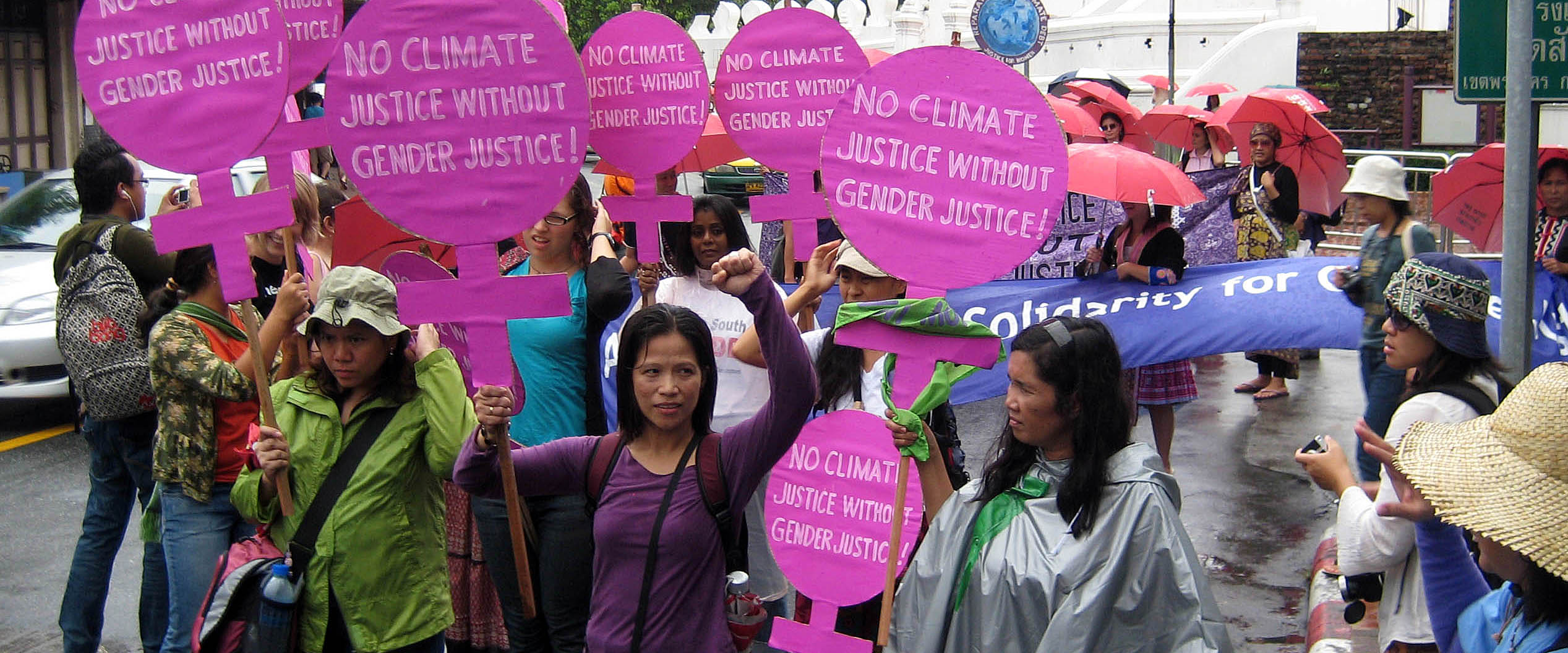Der von uns angestrebte Wandel ist fundamental. GenderCC ist davon überzeugt, dass Geschlechter- und Klimagerechtigkeit nur durch eine radikale Transformation bestehender Machtverhältnisse in Politik, Wirtschaft und Gesellschaft erreicht werden können.
GenderCC setzt sich für die Integration von Geschlechtergerechtigkeit in Klimapolitik auf allen politischen Ebenen ein. Dafür müssen geschlechtergerechte Politikansätze gefunden werden – für eine faire Reduzierung der Treibhausgas-Emissionen, für nachhaltige Anpassungsprojekte sowie umwelt- und klimafreundliche Entwicklung. Finanzierung, Technologietransfer, Forschung und Bildung müssen geschlechtergerecht gestaltet werden, um die Bedürfnisse von Frauen und Männern gleichermaßen zu berücksichtigen.
Gleiche Teilhabe von Männern und Frauen an Entscheidungsprozessen ist wichtig, aber reicht alleine nicht aus: Geschlechtergerechtigkeit muss sich in allen klimapolitischen Entscheidungen auf internationaler, nationaler und lokaler Ebene widerspiegeln.
GenderCC lehnt hochriskante Technologien wie Atomenergie, Gentechnik, Geo-Engineering und CO2-Verpressung (CCS) strikt ab. Wir fordern nachhaltige Politikansätze und Maßnahmen statt der einseitigen Bevorzugung marktbasierter Lösungen.
Goals
The main goal of GenderCC – Women for Climate Justice is integrating gender justice into climate change policy at local, national and international levels. GenderCC is working to achieve gender and climate justice by:
- Raising awareness and building capacity relating to gender and climate issues among decision-makers and others working on climate change in order to improve policies;
- Raising awareness and building capacity relating to gender and climate issues among women (and men) worldwide in order to increase pressure on policy-makers for effective mitigation and adaptation;
- Increasing the global knowledge base on gender and climate issues through research, action-oriented learning and frequent knowledge exchange to identify a growing host of options for effective climate action;
- Developing more effective climate protection and adaptation through empowering women and men to make active, maximum contributions to mitigation and adaptation measures, while denouncing the disproportionally negative impacts imposed on women by false solutions;
- Increasing the participation of women in the formal policy making process, including grassroots women;
- Raising awareness and capacity building on gender and climate change issues among youth and children;
- Bridging the gap between local action and decision making by bringing local experiences to the decision making levels through advocacy and lobbying;
- Strengthening the capacity of the GenderCC members to effectively participate in climate change negotiations through training, facilitating, and sharing information and experiences.
Strategy
Given the diversity of the GenderCC network, our strategy involves drawing on the rich knowledge gained in a variety of contexts. Our members and partners are able to use their experiences in their respective country and region to assess what needs to be done in terms of policy, research and implementation and how we can coordinate these activities to achieve the optimal impact. Whether at the international or national level, all actions should be interconnected, given the need for local and national experiences to be reflected at international level.
The slogan “emissions down, women’s rights up” is central to our advocacy, awareness raising and campaigning. All other demands for structural change, against false solutions, etc. are based on that: unless emissions are reduced, there is no way how women’s rights and the right to development can be fulfilled. The same applies the other way round: there is no climate justice without gender justice. Our diversity of background, expertise and strategies is key to our strength: “We are a forest, we don’t want to be a monoculture tree plantation. We are trees, we are flowers, and our common goal is climate justice” (Titi Soentoro, 2008).

